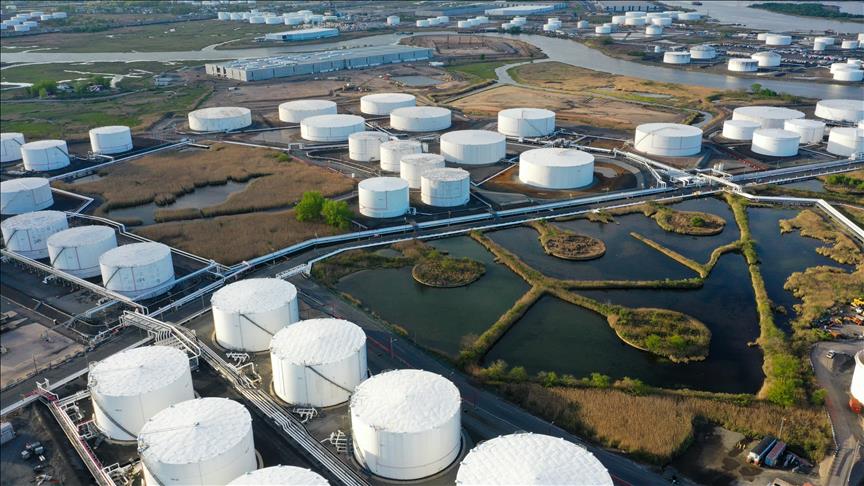Oil prices fell on Wednesday over weak demand signals fueled by a more-than-expected rise in US crude oil stockpiles, a strengthening dollar and fears of a global economic slowdown.
International benchmark Brent crude traded at $83.63 per barrel at 09.55 a.m. local time (0655 GMT) for a 1.46% decrease from the closing price of $84.87 a barrel in the previous trading session.
American benchmark West Texas Intermediate (WTI), trading at $77.34 per barrel at the same time, decreased 1.47% after the previous session closed at $78.50 a barrel.
Prices came under demand pressure after the American Petroleum Institute (API) announced late Tuesday its estimate of a rise of over 4.1 million barrels in US crude oil inventories, relative to the market expectation of a 333,000-barrel rise.
Significant inventory increases in the US, the world’s largest oil consumer, signaled weak demand. Prices came under further pressure with demand jitters as the US dollar index, which pits the dollar against a basket of six global currencies, rose to 114.71, hovering around 20-year highs.
When the dollar gains in value against other currencies, dollar-denominated oil is more expensive for buyers, discouraging trade.
Concerns over a slowdown in demand were also fueled by weakening global economic sentiment with a rise in recessionary risks.
On the supply side, Hurricane Ian threatens production in the Gulf of Mexico. A warning by the US National Hurricane Center (NHC) against a possible powerful hurricane within two days alerted several offshore oil companies in the region that is host to more than half of the country’s petroleum refining capacity.
Some major oil companies in the region, including bp and Chevron, have already shut-in production at their offshore oil platforms.
The US Bureau of Safety and Environmental Enforcement (BSEE) said approximately 11% of the offshore oil production in the Gulf of Mexico has been shut-in.

